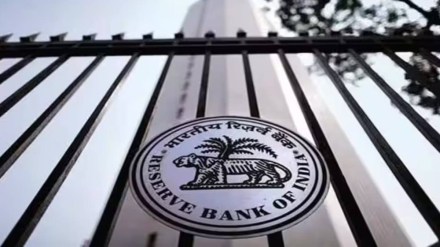– By Mahendra Kumar Jajoo
RBI, in 5th April policy, stayed put, extending the ongoing prolonged pause, much in line with market expectations. MPC kept key policy rates unchanged and so also the current withdrawal of accommodation stance. Assessment of current situation would suggest that MPC seems to find itself in a pole position as the growth momentum continues strong, core inflation showing a downward trajectory, good rabi production, expectations of normal monsoon and build up of higher forex reserve will provide the comfort that members need.
Deep diving further into these factors MPC has been balancing twin objectives of growth expectation and inflation containment on a durable basis. Evaluating the growth situation, manufacturing has been growing on a sustainable basis, reflected by capacity utilisation going up every quarter. It rose to 74.7% in Q3:2023-24 from 74.0% recorded in the previous quarter. It also reflects in credit growth data wherein sequentially term loans are registering higher growth rate, indicating initial signs of start of the private capex cycle (which is believed to normally start once capacity utilisation reaches 75%). Services have also registered high growth as reflected by PMI services running at ~60 and while private consumption on the urban side continues, the optimism that rural is likely to pick this year comes from expectations of normal monsoon and good rabi harvest season.
Turning to inflation, while the headlines have been volatile, decline in core inflation on a consistent basis in recent months has provided cushion to policy makers. The steady downfall in goods and services inflation provides comfort that inflation is moderating on a sustainable basis. For the headline inflation which includes food and fuel, is largely dependent on climate and global developments and one should be watchful. An already good rabi season and expectations of El-Nino giving way to La-Nino which is to deliver a normal monsoon season should stabilize the food inflation.
Forex reserves now stand very strong at ~636bn covering 10.9 months of imports projected for 2023-24 and more than 100% of total external debt outstanding at the end- September 2023. During the current financial year so far, India’s foreign exchange reserves increased by US$ 57.6 billion, which is the second highest among major foreign exchange reserves holding countries. This has not only helped in minimizing the rupee volatility but has also ensured smooth FPI inflows.
Globally and domestically the most prevalent opinion amongst credible analysts has been that India is amongst the most promising countries with favourable structural factors providing strong macro stability. And that India has managed to sail through pandemic and other recent geopolitical events with tremendous fiscal discipline and avoided any major growth drawdown. However, in the era of globalisation one cannot ignore the global developments.
One of the major threats that Indian economy faces being a commodity importing country is rise in commodity prices, post covid we have been in a comfortable position with commodity prices being in fiscally accepted range. With the geopolitics situation with new unfavourable developments, there are some early signs of spillovers in the form of rising commodity prices. This not only disturbs our trade balances but also hits inflation.
Even though we have had a good rabi season, the reality is the food prices have not stabilized yet and a lot of supply management is still required in order to ensure adequate supply and stability in food prices. The supply management is coming in various forms such as capping the prices and banning exports of certain commodities. The global food prices are also not ensuring stability, some of the food commodities such as sugar, meat and cacao are showing rise in prices. The hope that the food inflation is largely dependent on expectations of normal monsoon, which means a lot will depend on the monsoon season turns out.
Also considering that global markets rate hike cycle, the developed markets have gone for ~400bps + rate hikes whereas India hiked only by 150bps. Therefore, it might not be unimaginable that when global central banks are going for rate cuts, RBI may opt for tweaks through other routes. Another fact to be considered is because of the aggressive rate hike cycle, the US10Y treasury has moved to~4.32% levels, whereas India due to macro stability and bond inclusion has maintained fairly stable levels at ~7.05-10%. If one has to evaluate based on historic spreads and future rate expectations the scope of action gets limited. Historically the spread between India and US benchmark has been ~500-550bps, currently they are running at ~280bps. This is way less than the historic average, in course correction when US may go for deep rate cut cycle, India in order to restore the spreads and to keep attracting foreign investments may opt for a shallow rate cut cycle. Also, India’s bond inclusion in JP Morgan and Bloomberg indices puts further burden to keep the India benchmark rates competitive.
In conclusion space for rate cut likely has opened up though RBI seems in no hurry to cut rates presently but may use its pole position to align inflation structurally to its long-term target of 4%. As such, markets may find confidence in projecting rate cuts in the later part of the year and interest rates may remain stable with a downward bias.
(Mahendra Kumar Jajoo is the CIO – Fixed Income at Mirae Asset Investment Managers (India).)
(Disclaimer: Views expressed are personal and do not reflect the official position or policy of Financial Express Online. Reproducing this content without permission is prohibited.)
